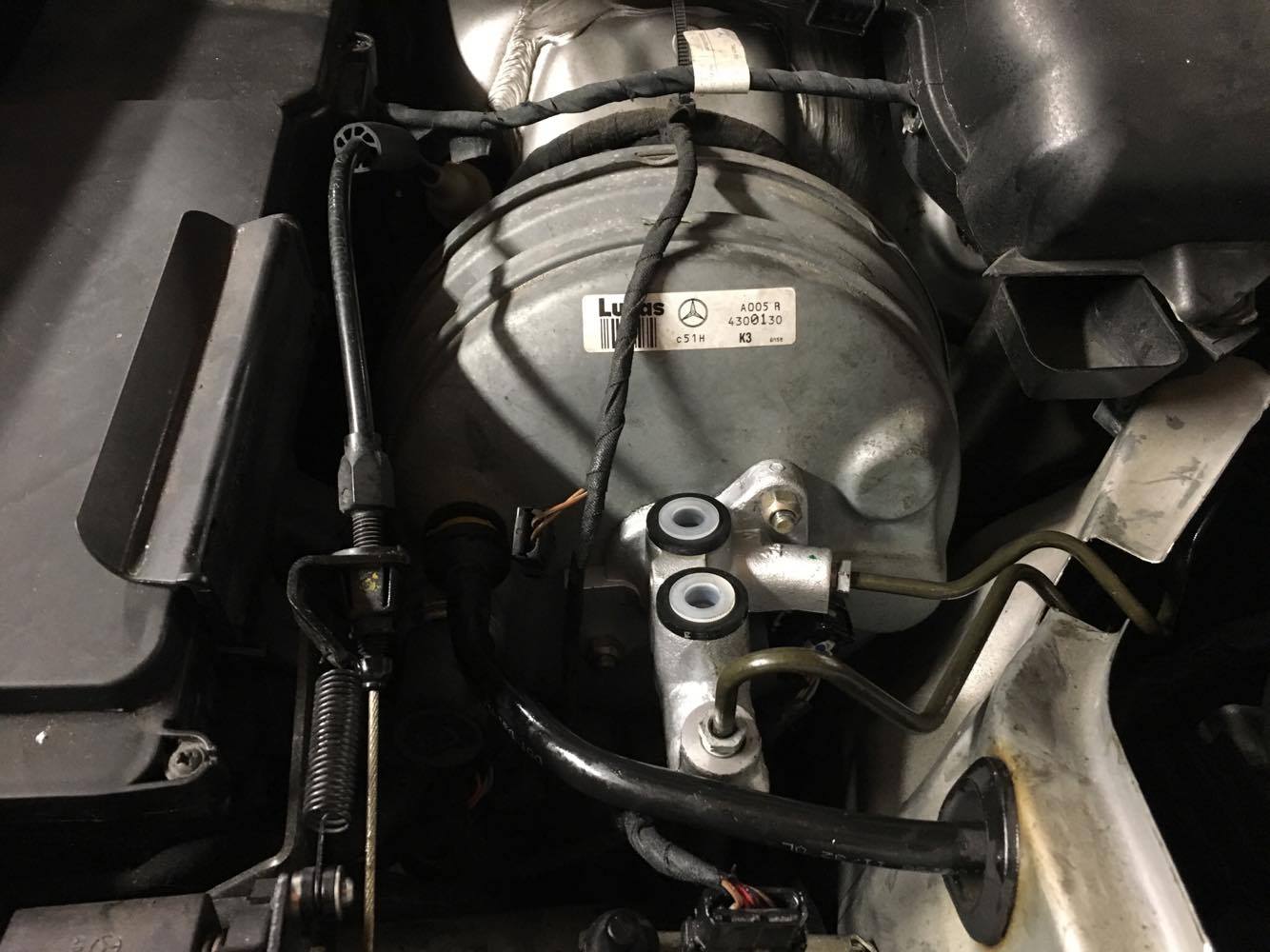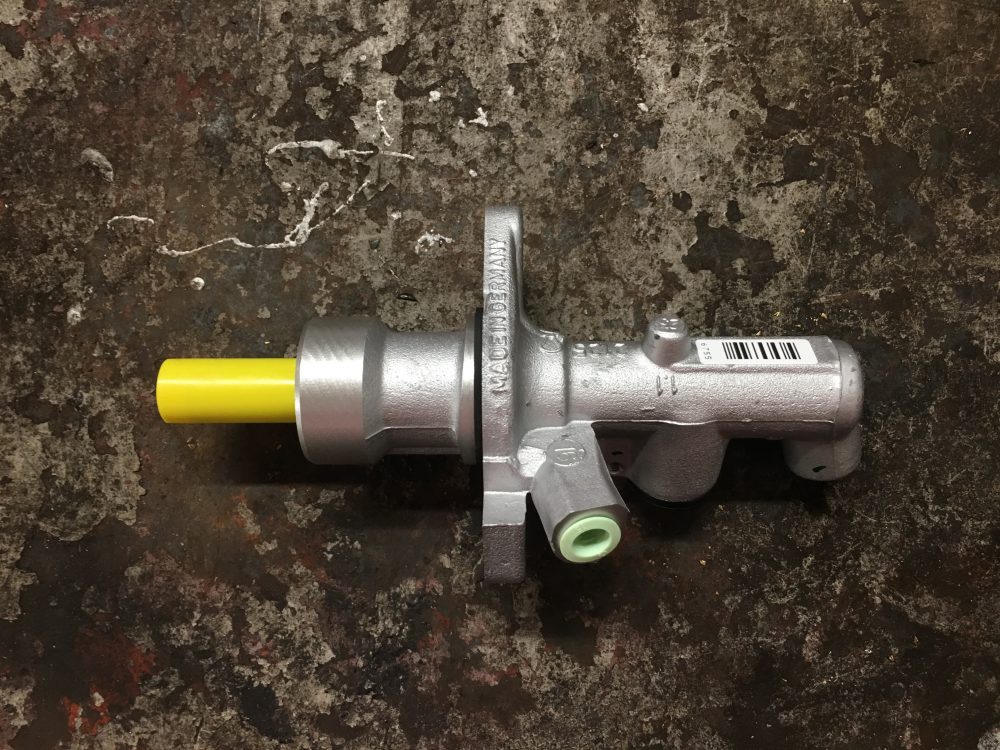In the braking system of your car, the master cylinder is a hydraulic pump that pressurizes the brake fluid through the brake lines and then to the brake calipers.
It is operated by the foot brake as you would expect and requires an adequate level of brake fluid to be forced to the brakes.
The master cylinder uses hydraulic pressure to trap the brake fluid which then causes the application of the brakes. When the brake is released, the hydraulic pressure is reduced as the brake fluid returns to the master cylinder fluid reservoir. Critical components of the brake system are a correct level of brake fluid, working brake lines/hoses and of course a functioning master cylinder.
Table of Contents
Bad Master Cylinder Symptoms
Ignoring signs of a faulty master cylinder can become very dangerous and potentially cause a serious car accident. They rarely become broken in modern cars but overtime in older cars they can become worn. Below are some of the symptoms of a bad master cylinder.
- Engine Warning Light. If you car is post 1995 era, it should have some sort of ECU/Computer for warnings. Braking is a critical part of a car and almost all car computers will receive data from the braking system. Anything from low brake fluid to point blank “Master Cylinder Problems”. Get your car to the garage or use a car scan tool to diagnose which part of the braking system is faulty.
- Brake Fluid Issues. Rubber seals which the master cylinder uses can break down due to age, which is passed into the brake fluid. The fluid will become a brown or black color and will not be as effective when braking. The brakes can feel spongy at times and not as strong as they normally are. You should also check around the master cylinder for any leaks from the aged rubber seals because this will be a clear sign.
- Foot Brake Issues. The most common symptom that drivers know something is wrong is when their brake pedal becomes spongy or sinks to the floor. Often the brake pedal will not return and you will need to flick it back up with your other foot. Hydraulic pressure to the master cylinder come from the foot brake and issues are known with the abnormal foot brake behavior.
- Brake Pedal Sinks When Car Is Off. When the ignition is turned off, if you press the brake pedal, it should remain hard. If you are able to press the brake pedal to the floor with no ignition, this is a clear sign that the master cylinder has a leak.

Bad Master Cylinder or Brake Booster
As shown in the image above, the master cylinder and brake booster (often called a servo) are connected and work together to stop the car. When the foot brake is applied, the brake booster increases the force to the master cylinder without any need for the driver to push harder.
As they work hand in hand, often problems are misunderstood and drivers change the wrong component. 9 times out of 10, the master cylinder is much cheaper than the brake booster to replace.
The brake booster uses a vacuum and the main symptom of a faulty brake booster is that the brakes become very hard to press. With no “boost” from the brake booster, this would be the cause rather than the master cylinder.
If you have just installed upgraded brake pads or simply replaced them but carried out a full overhaul, check for no air in the lines. This can cause similar issues, meaning that there is no bad master cylinder or brake booster in the first place.
Master Cylinder Replacement or Rebuild
The simple answer is to simple not bother with rebuilding the part unless it is a rare part for your particular car. Master Cylinder are very cheap and for peace of mind, buying a new one is your best bet and can even be bought on amazon.
Rebuilding the master cylinder is the usual case of performing a complete clean and then replacing all the rubber. In rare cases, this may be the only option but new ones can be bought for a much cheaper cost.
How To Replace Your Master Cylinder
The master cylinder can be slightly fiddly to replace but its not the hardest part to change. The tools that you will need to make the job easier are:
- Sockets, spanner and wrenches
- Plenty of rags
- Brake fluid extractor
- New brake fluid
- New master cylinder
Now with all the tools required, to replace your master cylinder, follow the below steps:
- Place rags around the master cylinder and on the cars bodywork. Brake fluid is nasty stuff and can damage the paintwork. Once covered, loosen the front and rear brake lines connected and then cover the ends of the lines so no air or dirt can enter.
- Remove Brake Fluid Reservoir. You will need to pump the current brake fluid from the reservoir firstly. To do this, use a fluid extractor such as the Mityvac 7400 7.3 Liter Fluid Evacuator to remove all the fluid. Then simply disconnect the plastic resorvoir, which is fairly straight forward.
- Remove master cylinder from brake booster. As mentioned, they are connected but only be a few bolts and an electrical connector that should easily be removed.
- Install new master cylinder to brake booster. In reverse, push the cylinder inwards and connect the bolts and electrical connector.
- Clean and Install Brake Fluid Reservoir. Before installing it, clean the reservoir with new brake fluid and swirl it round a few times. Then install it back onto the master cylinder.
- Reattach the front and rear brake lines. Ensuring you do not cross thread the connectors, tighten the connectors and ensure there are no leaks.
- Add brake fluid and bleed brakes. Ensure there is no air in the brake lines by bleeding the brakes. You may need a second person to press the brake pedals as you bleed the brakes or you can use a brake bleeder kit.
The 7 steps to change your master cylinder above can be done in less than a hour. Be sure to take precaution and use the right tools for a stress free repair.

